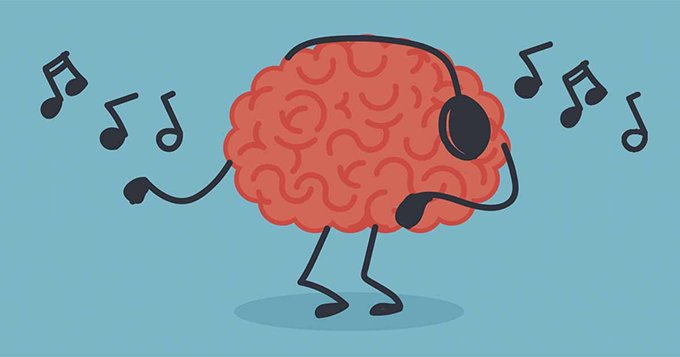
Music uses sounds and silences to evoke emotions and create aesthetic experiences in the listener. Its ability to convey feelings and emotions makes it a powerful medium for emotional communication. It is a cultural product that has been present in all human societies, reflecting and shaping the traditions and values of each culture. As Ludwig van Beethoven said , “Music is a higher revelation than science or philosophy.”
As early as the time of Pythagoras (6th century BCE), music was considered a science due to its mathematical foundation . Proponents of this perspective argue that the musical universe is composed of numerous numerical formulas, such as chords, intervals, ostinatos, seriations, etc.
There is also a relationship with physics , since it is the sound waves that are responsible for conducting the information to our ears so that the brain can process it.
There are many ways in which the evolution of music and science have gone hand in hand: from the mathematical foundations of harmony in the classical Greek period to the most recent neuroscientific research on how music affects our brains, feelings, and emotions.
But at the same time, music has been considered an art form ever since Plato first described it (in the 4th century BCE) in his work The Republic . The philosopher described it as an educational art par excellence, capable of penetrating the soul and shaping it in virtue.
Music and science throughout the centuries
Pythagoras studied the relationship between the lengths of strings and the sounds they produced , outlining in a theoretical and practical way through his monochord the bases for the mathematical understanding of musical harmony.
Later, during the Middle Ages, music was conceived as a branch of mathematics within the quadrivium , the curriculum of elites. This view reinforced the idea of music as a discipline with solid scientific foundations.
Centuries later, during the Renaissance and later during the Baroque, advances in physics made it possible to delve deeper into the study of acoustics, the branch of science that studies sound. This led to a better understanding of how music is produced and perceived, laying the groundwork for future innovations in instrument making and musical composition that would emerge during the Classical and Romantic periods.
The 20th century marked a turning point in the relationship between music and science with the emergence of experimental music . Composers such as John Cage began to use techniques of indeterminacy and seek revolutionary results, challenging established conventions.
It is also worth noting the influence of electronics since the late 1950s, when computer-controlled composition began to be explored , merging music with computer science.
Neuroscience and music
Currently, scientific research focuses, among multiple interdisciplinary approaches, on how music affects our brain and our emotions. Numerous studies have shown that music can activate brain areas related to memory, attention, concentration, emotion, and more.
This fact has contributed to the emergence of techniques that use music to stimulate brain activity, such as the BAPNE method , which employs singing and body percussion to stimulate cognitive and executive functions. Its acronym refers to the disciplines of Biomechanics, Anatomy, Psychology, Neuroscience, and Ethnomusicology.
In the book Body Percusion (2018), activities are proposed where the body and movement experience and build music through polyrhythms as the basis of neurological work.
A workshop to experience music as art and science
Harmonic tubes, or boomwhackers, are an ideal tool for exploring the relationship between music and numbers, as demonstrated in a recent workshop . These plastic percussion instruments, available in a variety of colors and sizes, offer a unique and accessible way to explore fundamental musical concepts, promoting creativity and artistic expression.
They also allow for understanding concepts such as rhythm and musical structure when used to create simple harmonic accompaniments, and even when playing rhythmic-melodic phrases from songs. Using boomwhackers facilitates experimentation and creative musical development, allowing for a better understanding of theoretical musical concepts.
The kinesthetic dimension of music
The use of body and space, thanks to the ease of interpretation of these percussion instruments, adds a kinesthetic dimension to musical learning, improving participants’ coordination and spatial awareness.
To create coherent melodies and harmonies, participants must coordinate their actions, developing crucial skills such as active listening, rhythmic synchronization, nonverbal communication, and teamwork. By converting movement into sound, participants improve their hand-eye coordination, spatial awareness, and fine and gross motor control.
Psychomotor development is not only beneficial for music; it can also have positive effects on other areas of learning and personal development, such as stimulating creativity through a playful and experimental approach that encourages creative thinking and exploring new forms of musical expression.
Thus, as the famous French musician and poet Guillaume de Machaut (1300-1377) wrote, music is a science that can make us laugh, sing, and dance. Thus, we can conclude with this dual conception of music as both science and art, which still prevails today, in the 21st century.
Author Bio: Miguelina Cabral Domínguez is Director of the Department of Physical Education, Music and Art and Coordinator of the Master’s Degree in Secondary and Baccalaureate Teacher Training, specializing in Music at the Catholic University of Valencia